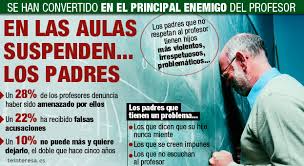A principios de abril, la web de urbanismo New Urban Designer dedicaba una entrada a recordar un proyecto pionero de movilidad urbana sostenible, la iniciativa Bicycle City, desarrollada en el condado de Lexington, al sur de Columbia, la capital de Carolina del Sur. Ahora que vuelven a surgir con fuerza iniciativas que reclaman la retirada de los coches de los centros de las ciudades, el uso de la bicicleta y el diseño de ciudades pensadas a escala humana, es buen momento para conocer (o recordar) esta iniciativa norteamericana que surgió en los años 90. Sus impulsores deseaban convencer al conjunto de la sociedad americana de que era posible diseñar un modelo urbano alternativo, en el que los elementos dominantes dejasen de ser el automóvil y el centro comercial.
Desde un principio, la apuesta por la bicicleta distaba mucho de ser un capricho. La bicicleta aúna ahorro energético con estilo de vida saludable, tanto por el incremento de ejercicio físico como por el rato de descanso mental que supone desplazarse en este vehículo sencillo. Un modelo libre de ruidos, de polución y de estrés, en el que los coches se relegan a los grandes desplazamientos y se ubican en grandes espacios de aparcamiento periféricos.
Pero además, en As Salgueiras, nos ha encantado comprobar que esta apuesta de finales del pasado siglo incluía como elemento fundamental el respeto a las mascotas y su integración en los flujos urbanos, o el cuidado de la biodiversidad de fauna y flora en los terrenos periféricos del perímetro de la ciudad. Porque la sostenibilidad no es un concepto pensado para mejorar solo la vida del hombre, sino una apuesta por la recuperación integral del paisaje urbano y natural del planeta.
ANIMALS AND BICYCLES IN LEXINGTON
In
early April, the New Urban Designer web dedicated an entry to
remembering a groundbreaking sustainable urban mobility project, the
Bicycle City initiative, developed in Lexington County, south of
Columbia, the capital of South Carolina. Now
that initiatives that demand the withdrawal of cars from city centers,
the use of bicycles and the creation of cities designed on a human scale
are coming up again, it is a good time to know (or remember) this North
American initiative that appeared in the 1990s. Its proponents wanted to convince american
society as a whole that it was possible to design an alternative urban
model in which the dominant elements ceased to be the car and the mall.
From the beginning, the commitment to the bicycle was far from being a whim. The bicycle combines energy saving with a healthy lifestyle, both by increasing physical exercise and by the mental rest time that involves moving in this simple vehicle. A city free of noise, pollution and stress, in which cars are relegated to large displacements and are located in large peripheral parking spaces.
But also in As Salgueiras, we were pleased to see that this commitment of the last century included as a fundamental element respect for pets and their integration into urban flows, or care for the biodiversity of fauna and flora in the peripheral lands Of the perimeter of the city. Because sustainability is not a concept designed to improve only the life of man, but a commitment to the integral recovery of the urban and natural landscape of the planet.




